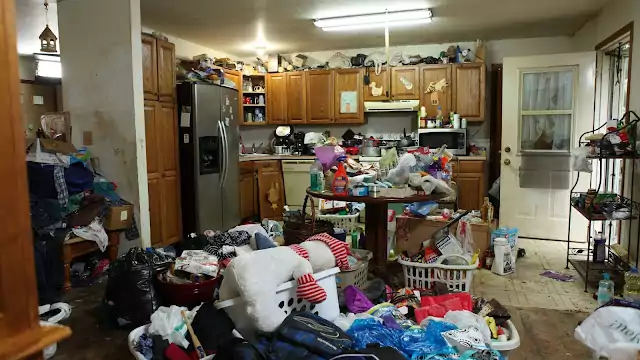Cluttering and hoarding are two very different things. Many of us have clutter in our homes but less than 1% of the population hoards. Clutterers and hoarders may respond well to cognitive behavioral therapy; the hoarders may be in need of medication and intensive cognitive behavioral therapy to change their lifestyles. Hoarders are a danger to themselves, their neighbors and their community as they tend to create a danger for rescue workers.
Symptoms of Hoarding
We’ve all seen TV shows or movies where one of the characters has obsessive compulsions. Most of these characters are “neat freaks”, but occasionally there are characters who are hoarders. These are the ones whose homes are filled with stuff; so much stuff that to follow them into their homes means having to negotiate the way through mountains and mazes of belongings which have taken over almost every inch of space. These characters are classic examples of compulsive hoarders.
Hoarders own behaviors often get in the way of their treatment. Behaviors typical to hoarders include:
- Indecisiveness
- Perfectionism
- Procrastination
- Avoidance
People who hoard have a tendency to hoard items of little or no value, including animals that have often been tossed aside and left to survive on their own by former owners and breeders. Many hoarders live in isolation so no one sees their hoards. Some hide their hoards where loved ones won’t find them. They may even resort to shoplifting to increase their hoards. They may be seen taking every free item possible at displays and give-a-ways. They are often frustrated by their own behavior and doubt that there is any way that they can be helped, leading to further anxiety and more hoarding.
Reasons for Hoarding
Many people tend to believe that this compulsion is limited to the elderly who survived the Great Depression, only to lose everything they owned in the process. This stereotype is only partially true. Young people hoard in the same way that the elderly do. Both parties, scientists have found, may be hoarding due to traumatic experiences in their past. These traumatic events, often combined with underlying neurological disorders, lead to the need to hoard. These people are anxiety driven when it comes to gathering more items. They receive a sense of security when surrounded by their belongings.
Treatment
The most popular forms of treatment involve the combined use of cognitive behavioral therapy and antidepressant medications, such as Paxil. Cognitive behavioral therapy teaches patients to change their brain patterns and daily routines, which enables them to no longer feel the need to fall back on their old habits. During these sessions the clients discuss the beliefs they have about their possessions and are often exposed to situations that lead to their feelings of anxiety. With continual exposure over a number of sessions they learn to cope with their anxiety without needing to use hoarding behaviors.
There is a website that has an OCD test that should give you some idea of whether or not you or a loved one might have OCD, but also realize that not all compulsive hoarders have OCD. Taking the test is a step in the right direction, but it is not enough to know when someone is truly in need of help. The advice of medical professionals is a necessity when deciding how to best deal with the situation.
